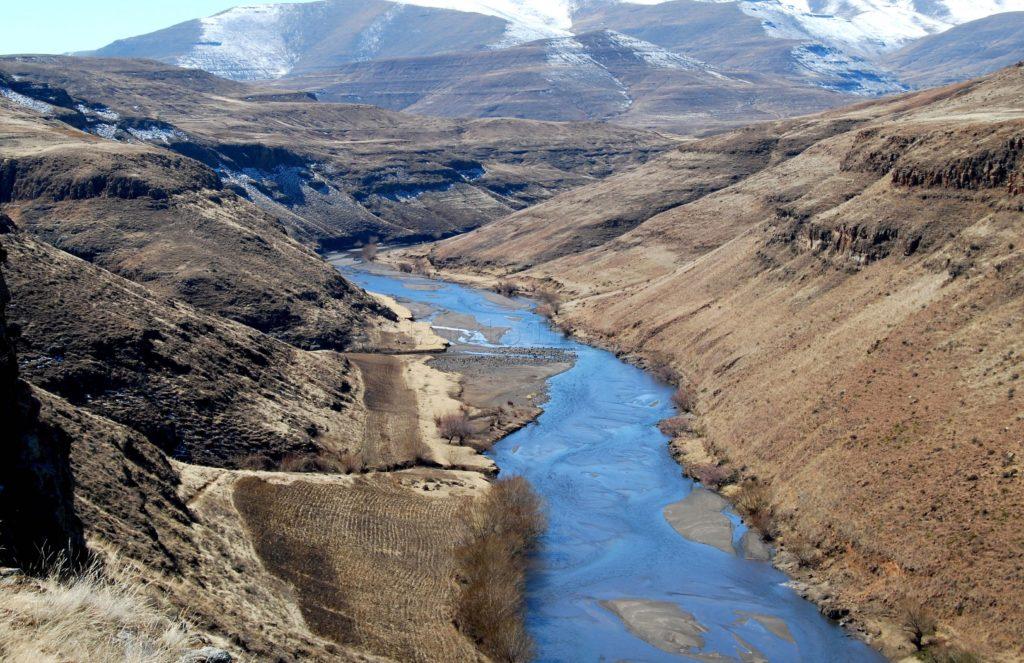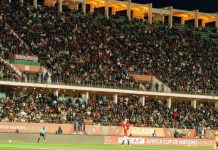Africa-Press – Lesotho. Communities in Thaba-Tseka en-route to the Polihali Dam, say their homes have been damaged during the construction of a road in their area. The road leading to the multi-million maloti Polihali Dam in the giant Lesotho Highlands Water Project (LHWP) has community members from the three villages of Ha Semphi, Ha Bolomo and Mafantising gravely concerned.
The area chief of Ha Semphi, Chief Ngolisang Bolomo, said the houses were damaged during the process of blasting part of the road construction. He said a number of houses were destroyed during construction as a result.
“A huge boulder was blasted and rocks hit these homes. Some were partly destroyed while others were totally ruined,” Chief Bolomo said.
He said the rolling stones broke the walls and entered the houses, thereby destroying furniture and other equipment inside the homes while some of the rocks rolled into the fields and destroyed crops which has affected affected farmers’ crop yields.
This saw the enraged community blocking the road so that the trucks working on the construction discontinue with their work. Chief Bolomo said the contractor who was involved came to the area and promised to compensate the affected communities.
“The contractor came here and the agreement to compensate them was entered into,” he said but the compensation has not been effected as yet, leaving residents angry. Some residents said they were hoping for resettlement because they are affected by the construction of the dam.
LHDA Public Relations Manager, Masilo Phakoe, confirmed that controlled blasting along the Polihali Western Access Road (PWAR West) on May 17, indeed caused some damage to some private citizens and their properties in Ha Semphi.
Fortunately, Phakoe said, no one was injured as the site was evacuated before the blast, as per the pre-blast safety protocols. “We can also confirm that some rocks fell on a garden destroying crops and three households were affected,” he said.
He said the damage includes a collapsed wall, two broken windows and damaged roofing. He said the owners of the house where the wall was damaged were temporarily accommodated by their neighbours on the day of the incident.
Phakoe further revealed that an agreement was drafted which states that temporary repairs will be done to the house while the contractor prepares a permanent solution for the damage caused.
The repairs have not been completed and the contractor continues to engage with affected households on their acceptance of the repair works, he said. Meanwhile, the project engineer and the contractor are reviewing blasting methods to ensure that methods that significantly reduce the risk of property damage are applied.
Phase II construction, like other infrastructure projects, is guided by environmental management plans which outline construction impact and mitigation measures.
In the case of blasting activities, mitigation measures include informing communities about the planned blasting activities well in advance and evacuating residents to a safe distance before any blasting activity.
Phakoe said it is worth noting that the contractor has complied with the LHDA blasting protocols by conducting pre- and post-blasting asset condition surveys, where the conditions of houses were recorded before and after the blasts to ensure that all damages caused by blasting are recorded and repairs made where necessary.
He said the contractor is continuing with the repair works and the affected households will sign-off if they are happy with the repairs made to their houses.
LHDA visited the village and the owners of the houses in question to inspect and to ensure that all the necessary measures are being taken to repair and replace damaged houses and furniture.
For More News And Analysis About Lesotho Follow Africa-Press






